As we slide into the middle of September we need to think seriously about spring-flowering bulbs. Yes I know that the weather is doing its best to make us think about petunias and barbecues, for a few days at least, but if it is summer, autumn cannot be far behind!
There are lots of bulbs we can grow in our gardens but, for this week, I want to concentrate on daffodils (narcissus). Just to get one thing straight right at the start, daffodils is the common name and narcissus is the botanical name – it is that simple. I was not alone in thinking, as a child, that yellow ones were daffodils and the white ones with red cups were narcissus! Even if this were the case then the plethora of new colours would have made such a system unworkable.
You can plant daffodils in almost any part of the garden. This is partly because they are so varied in size and colour. But some of the parents of our garden daffodils are native bulbs which means that, unlike garden tulips, they are perfectly happy in our damp climate.
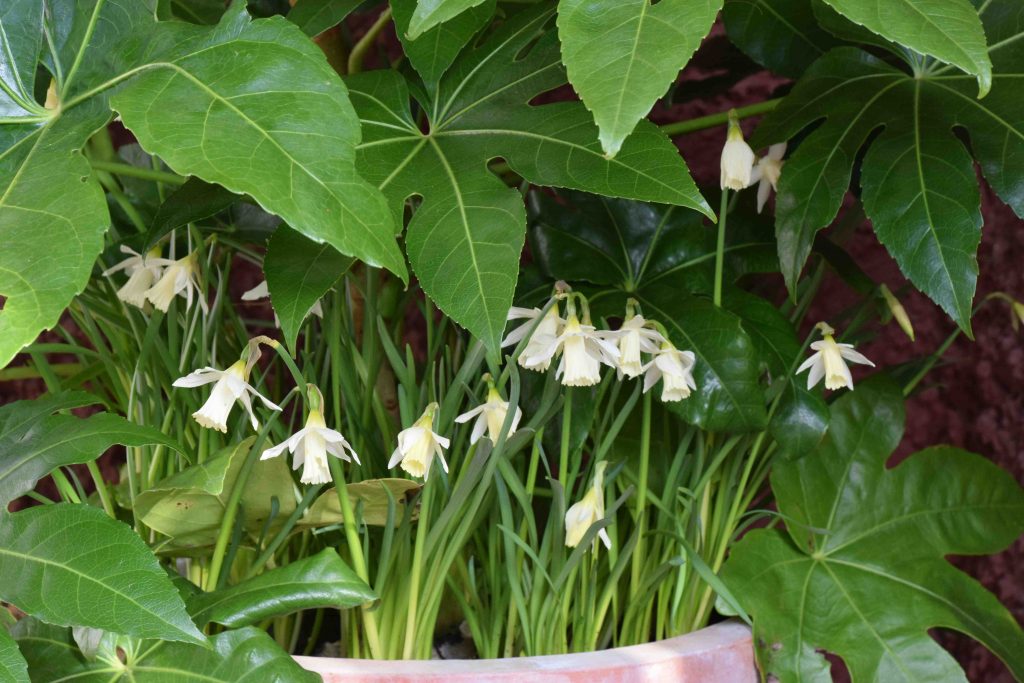
I want to chat about planting in pots this week because they are perfectly suited to this use. But there are two ways to use them in pots. You can put them in a pot for one year, removing them as they die down, in May or June. Or you can plant them permanently, to be left in the pot for many years (as above).
If you are planting for one season, you can pack the bulbs in so they are almost touching. This is to get a full effect the first season. The general rule for planting depth is two and a half times the height of the bulb. But this is not too critical in pots and as long as they are deep enough that you can plant your pansies or forget-me-nots on top without damaging the tips, they will be fine. And you can use multipurpose compost.
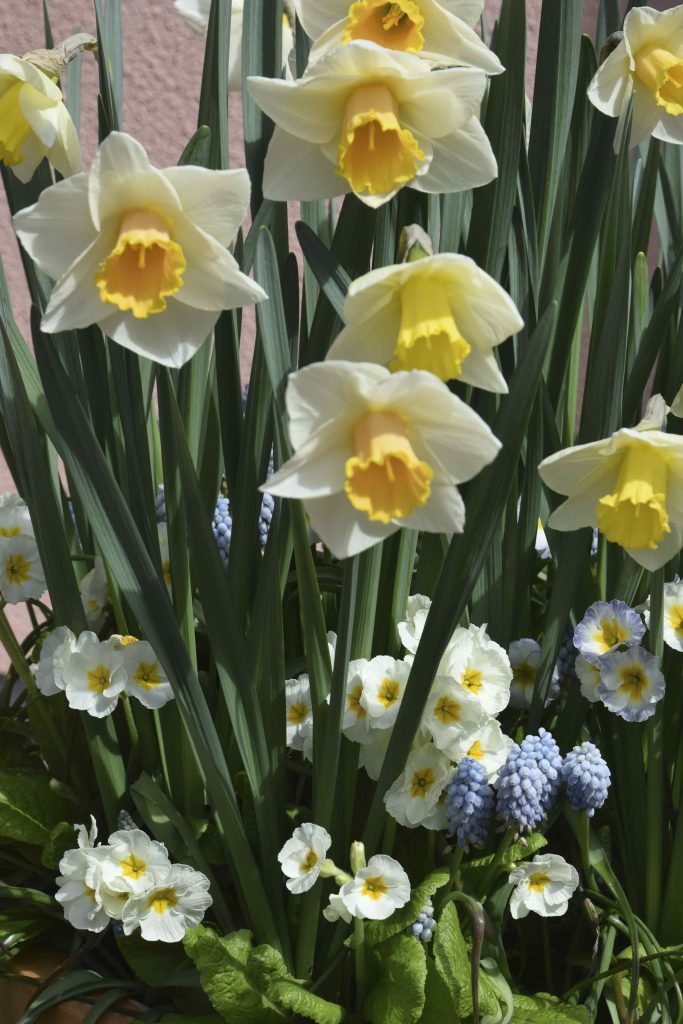
If you are going to leave the daffodils in the pot for many years use John Innes No 3 compost or a mix of that with multipurpose compost and space the bulbs a bit further apart. This is so the bulbs can grow and increase without getting too crowded. They can be planted to fill the pot and then change bedding above them or you can plant them under shrubs in pots. My planting of ‘Elka’ under fatsia (top – above) did not quite work because the large fats leaves shaded the daffodils a bit too much. But as the fatsias lost their lower leaves it looked better and eventually the whole lot was planted out and the daffs still make a carpet under the fatsia.
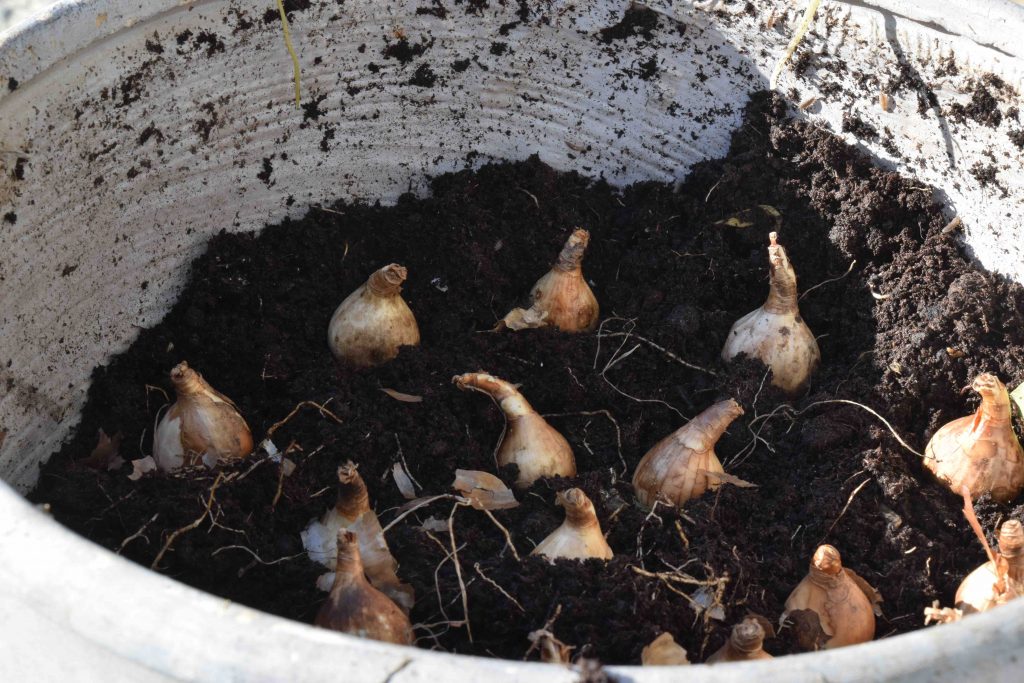
If your pots will be in shade then always choose short daffodils. We often put pots against walls and that ‘stretches’ the growth of plants, as light comes only from one side. There are lots of dwarf daffodils although it would be easy to think that the only one is ‘Tête-à-tête’. It is hard to think of a better small daff than this, especially as it is probably the cheapest of all too! Be generous with it. Now there are two double forms of it, rather similar, and ‘Tête Boucle’ seems to be the most popular.
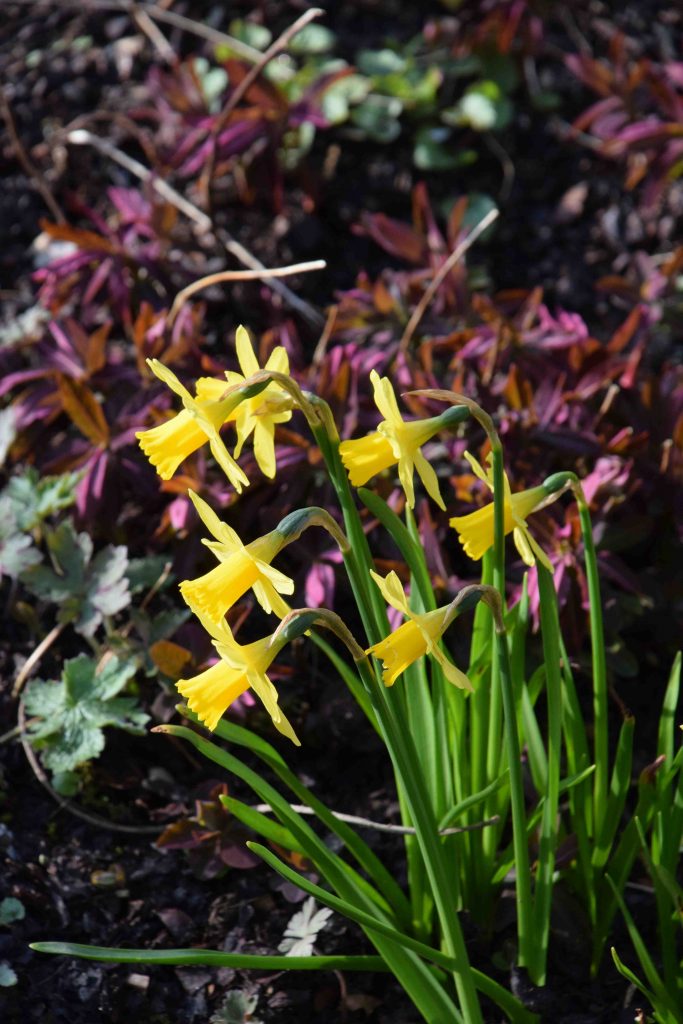
I am also a big fan of ‘Hawera’, a more delicate flower and at least a month later in bloom. It has narrow foliage and you need to plant them quite closely and I would plant at least 20 in a clump to make a decent show. I use it a lot in pots and baskets and, after blooming, plant them in the garden where, in a sunny spot, they just get better every year.
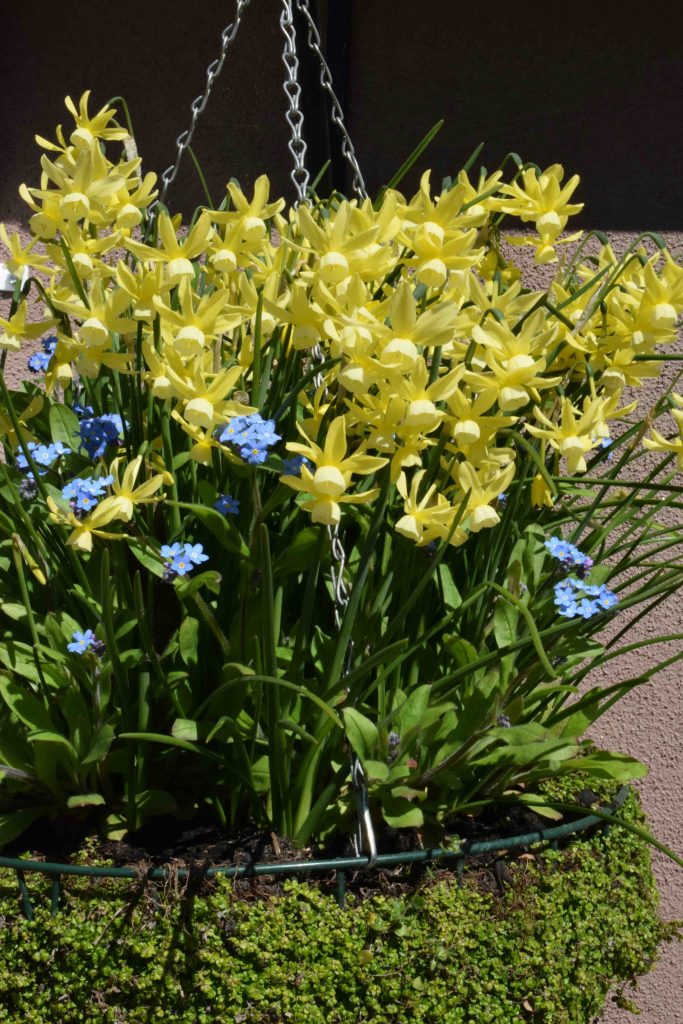
Jobs for the week
Replace summer bedding
As soon as summer bedding starts to look tired, pull it up, add it to the compost heap and clear the ground ready for spring bedding. If you can get these plants in before the first frosts they will establish well and give a better display next year.
Don’t forget you Christmas cactus
If you put your Christmas cactus, clivia or other houseplant outside for summer, bring it in now before it gets too cold. Check it over very carefully for slugs and snails before bringing it in!
Take fuchsia cuttings
There is just about time to take some cuttings of fuchsias, salvias, pelargoniums and other tender plants. Take healthy tip cuttings and pop them into a mix of perlite and compost and keep them just moist. Prevent wilting by covering with a clear plastic bag or plastic dome* and place on a shady window sill.
* those clear packs you bought your muffins in are good for this!